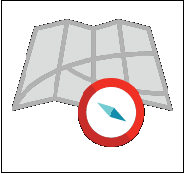Hanoi Money & Costs
The official currency of Vietnam is Dong (VND) since May 3, 1978. Issued by the State Bank of Vietnam, it has the symbol ₫ and is subdivided into 10 hào. However, the hào is now worth so little that it is no longer issued. The word Dong refers to Chinese bronze coins which were used as currency during the dynastic periods of China and Vietnam. The paper notes come in denominations of ₫200 , ₫500, ₫1000, ₫2000, ₫5000, ₫10000, ₫20000, ₫50000, ₫100000, ₫200000, and ₫500000. Only recently, in 2003, coins were reintroduced in denominations of ₫200, ₫500, ₫1000, ₫2000 and ₫5000. The Dong rate is set by the government against a basket of currencies, reflecting movement of the US dollar against others. 1 USD fluctuates around ₫22000 , and 1€ or $1.13 is equal to ₫24 300.
1. Money Exchange
The money exchange is available at most airports, banks, hotels, and authorized exchange bureaus. You can change US Dollars in most areas of Vietnam, but the Euro, Pound and many other currencies as well as travelers’ checks can be done in urban bank branches, but not always in smaller towns. The exchange rate remains the same at most banks, but it may be abit lower at small hotels and airports. At many banks , the damaged notes will not be accepted. If you deposit a damaged note, the bank may charge up to 2% of the note’s value. Currently, banks are open on weekdays from 8am to 3pm, with a lunch break from 11:30am to 1pm.
You need to make sure that the Vietnamese notes you receive are not torn, this is because many shops and restaurants will not accept them. Also try not to change too much money at one time, as you will end up with a large wad of notes. Be careful, the 20,000 notes look only slightly different from the 500,000 one but the value is a big gap. Handy tip: Keep 500,000 dong notes separate from your other dong notes. Less chance of confusion then. Other paper notes are 100, 200, 500, 1,000, 2,000, 5,000; 10,000, 20,000, 50,000, 100,000, 200,000, 500,000 Dong. Most are clearly identifiable by colour.
Outside Vietnam the Dong is normally not accepted (excluding Cambodia and Laos). Therefore, you should exchange any Dong left so before leaving the country. In Ho Chi Minh airport, Hanoi Airport, Danang Airport,.. you can change before immigration at two bank booth that use the standard rate plus 2% fee. You can also use Vietnam currency for any purchase at the duty free shop, but sellers will convert your local currency into US dollars as all goods price are in US Dollars.
2. ATM Service
Currently, ATMs have proliferated throughout Vietnam’s urban areas. There are a number of international banks operating in both Hanoi and Ho Chi Minh City with 24hour cash withdrawal facilities. Most ATMs enables you to get cash from VISA, MASTER CARD, Cirrus, Maestro, Plus and JCB network.
Under Vietnamese law, ATM may only dispense cash in Vietnamese Dong in ₫50000 , ₫100000, ₫200000 and ₫500000 denominations, with a limit of ₫2000000 for each withdrawal and a daily limit of ₫20000000. ATMs will charge a fee of ₫50000 per transaction.
3. Credit Cards
Visa and Master are very widely accepted in mid to upper end shops, restaurants, and hotels in major cities of Vietnam such as Hanoi, Danang, Hue, Ho Chi Minh. You can also pay by credit card for the larger taxi companies. However, there is usually a 3% charge associated with using them. You should plan on using a credit card for larger items like hotels or fancy meals and some shopping, but visit the local ATM so you have plenty of local currency for everything else.
4. Travel Cost
Traveling costs varying from dirt cheap to sky-priced are almost nowhere to be seen but Vietnam. Whatever your budget is, Vietnam has something to offer. Hence, your desired taste and comfort will decide where your money goes. It is, however, important to make sure you are shrewd in saying goodbye to your hard-earned income though not everyone wants to rip you off. The following tips will help you to be smart at spending money, yet first things first - you should know the generic costs for common goods and services beforehand.
a. Eating and drinking
Vietnam, to most connoisseurs, is a real paradise. Dining out here always offers top value for money. Strolling around any town and city, you will easily come across a host of street stalls where delicious and unique dishes can be served for between US$0.50 and US$1. A decent meal in small cafeterias may cost you around US$2 to US$3. In a-bit-larger restaurants, well-liked by local gastronome, a meal with several superbly -prepared dishes and drinks will get you a bill of US$ 5 to US$10 or more. If you are a do-it-yourself follower, spending some times to grasp Vietnamese cookery is also remarkably exciting. Vietnam offers everything you need to be an excellent cook. Vietnamese produce such as rice, beans, vegetables, herbs, chicken, fish and fruit are almost first rate in the world. You can load them up in a nearby supermarket but really, part of living in Vietnam is to do things in the Vietnamese way. Surfing the streets or markets in early mornings, you will find thousands of vendors who sell all fresh food at cheap price and even give you some extra things as a social experience. With a bit bartering, a bit talking and a bit laughing, life here is much more wonderful.
b. Traveling
If you keep moving from place to place by air, then airfares will make up a lion share in your traveling cost. Thanks to ongoing downward trend, domestic flights in Vietnam are now a bit cheaper. A one-way ticket from Hanoi to Ho Chi Minh City (Saigon) is between US$80 and US$130.
Trains offer great value for independent travelers to cover long distance of Vietnam with little money. A sleeper on the fastest Unification Express (S1) from Hanoi to Ho Chi Minh costs you around US$40 and US$60.
Bus travel is also a good choice for tight budget. While fares of public buses between major destinations are fixed, traveling by bus to most distant areas means bargain. For instance, you may be asked US$60 or more for a trip from Hanoi to Saigon while the normal cost for locals is around US$30. If you want to be completely independent and flexible, consider renting a car (with a driver, of course) and a guide if deemed necessary. Rental costs may vary considerably, depending on your journey, but usually US$30 for around-town and US$70 or more for along-country. A guide adds up between US$20 and US$40, depending on destination and trip duration.
c. Lodging
Lodging is none of matter in Vietnam. Just make sure not to hesitate to negotiate for a discount in low season. You should look for more details in “Vietnam Accommodation”.
d. Souvenirs
You may be frequently overcharged with these items, so be smart at bargaining
Recommended Reading
How much i will spend in Hanoi
The cost of Hanoi is pretty cheap compared to the Western World, and some of South East Asia too. Where Thailand has hiked it’s prices thanks to the never-ending tourism, the prices in Hanoi are still relatively low.
See detailsRelated Category
TRENDING NOW
-
Cave explore 2
08 Jul, 2021
-
Hanoi winter season
21 Apr, 2021
-
Best weather to visit Hanoi
01 Apr, 2021
-
Raining season in Hanoi
01 Apr, 2021
-
Lost passport in Hanoi and solution
01 Apr, 2021
-
Visa extension service in Hanoi
01 Apr, 2021















